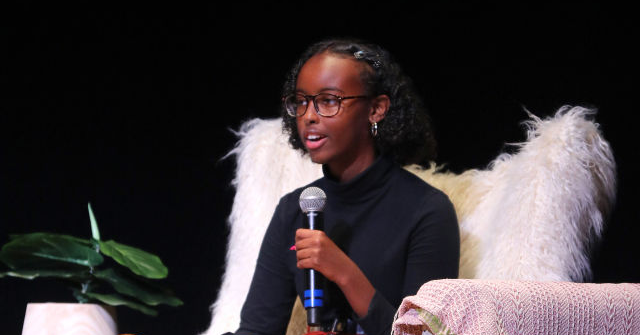 Vera C. Rubin Observatory sits atop Chile’s Cerro Pachón, a location chosen for its dry air and dark skies. Rubin Observatory/NSF/AURA/B. Quint
Vera C. Rubin Observatory sits atop Chile’s Cerro Pachón, a location chosen for its dry air and dark skies. Rubin Observatory/NSF/AURA/B. QuintIn just ten hours, the Vera C. Rubin Observatory—a scientific endeavor two decades in the making—captured images of millions of galaxies and thousands of asteroids. The first photos, released today (June 23), mark only the beginning for the next-generation survey telescope, which is set to begin its official ten-year mission later this year.
“Starting today, our ability to understand dark matter, dark energy and planetary defense will grow even faster than ever before,” said Brian Stone, chief of staff at the National Science Foundation (NSF), during a press conference unveiling the images today. The Rubin Observatory is jointly funded by the NSF and the Department of Energy’s (DOE) Office of Science. Construction on the survey telescope, which takes its name from pioneering astronomer Vera Rubin, began more than 20 years ago.
Equipped with an 8.4-meter telescope and the world’s largest digital camera, the Rubin Observatory is designed to create the most detailed time-lapse view of the universe ever assembled. It sits atop Chile’s Cerro Pachón, a location chosen for its dry air and dark skies—ideal conditions for astronomical observations.
Among the first images released today is a snapshot of the Virgo cluster of galaxies, located about 55 million light-years away. Remarkably, this image represents just 2 percent of the whole frame captured by the observatory. To display the full image at full resolution would require 400 ultra-high-definition screens.
Other early pictures released by the observatory offer a stunning look at the Trifid and Lagoon nebulae. Located in the Sagittarius constellation and made up of clouds of gas and dust, these clouds are where stars are born and, therefore, known as “stellar nurseries.”
 An image showcasing a slice of the Virgo cluster of galaxies. Courtesy Rubin Observatory
An image showcasing a slice of the Virgo cluster of galaxies. Courtesy Rubin Observatory A view of the Trifid and Lagoon nebulae. Courtesy Rubin Observatory
A view of the Trifid and Lagoon nebulae. Courtesy Rubin ObservatoryIn addition to distant galaxies and nebulae, the Rubin Observatory will also capture comets, supernovae and possibly cosmic phenomena that have yet to be discovered. It has already captured 2,104 never-before-seen asteroids, including seven near-Earth asteroids that pose no danger. Over the next two years alone, the telescope is expected to detect millions more, far exceeding the roughly 20,000 asteroids currently tracked by other ground and space-based observatories. This capability could help spot any asteroids that might one day impact the Earth or the Moon.
“This treasure trove of a dataset will give researchers unprecedented depth and clarity to questions that drive the fundamental research supported by DOE’s Office of Science,” said Harriet Kung, the agency’s acting director, during today’s press conference. Some of these questions will examine the dark matter and dark energy that make up 95 percent of our universe and explore the universe’s patterns of expansion, she added.
Even more discoveries are on the horizon as the Rubin Observatory prepares to launch its decade-long mission: the Legacy Survey of Space and Time (LSST). Over the next decade, the telescope will capture thousands of images of the southern sky every night, collecting more data on the universe than all previous optical telescopes combined.
In addition to advancing science, the observatory is expected to continue producing breathtaking imagery. Its debut photos already “remind us of the full meaning of words like awe and wonder, and the limits of our language,” said Michael Kratsios, director of the White House’s Office of Science and Technology Policy, during today’s event. “They are sublime in their beauty, overwhelming in their scope and profound in their promise of the discoveries to come.”












 English (US) ·
English (US) ·  French (CA) ·
French (CA) ·  French (FR) ·
French (FR) ·